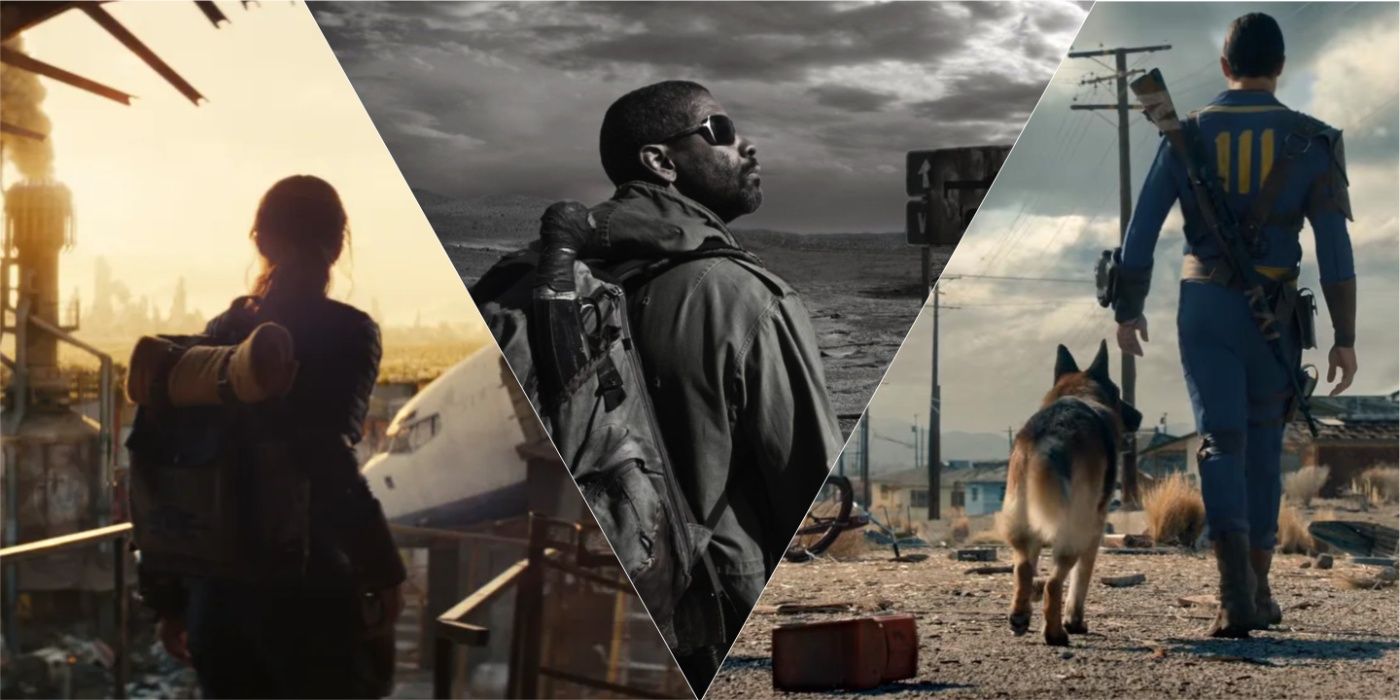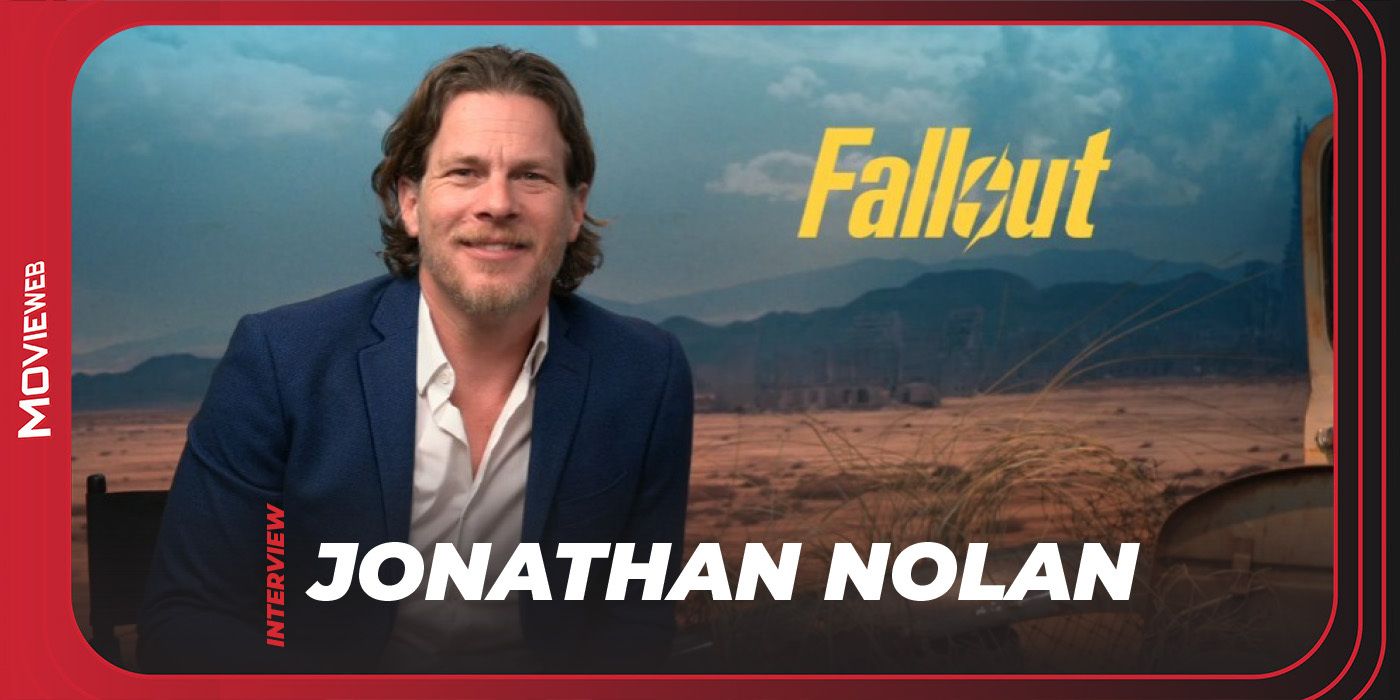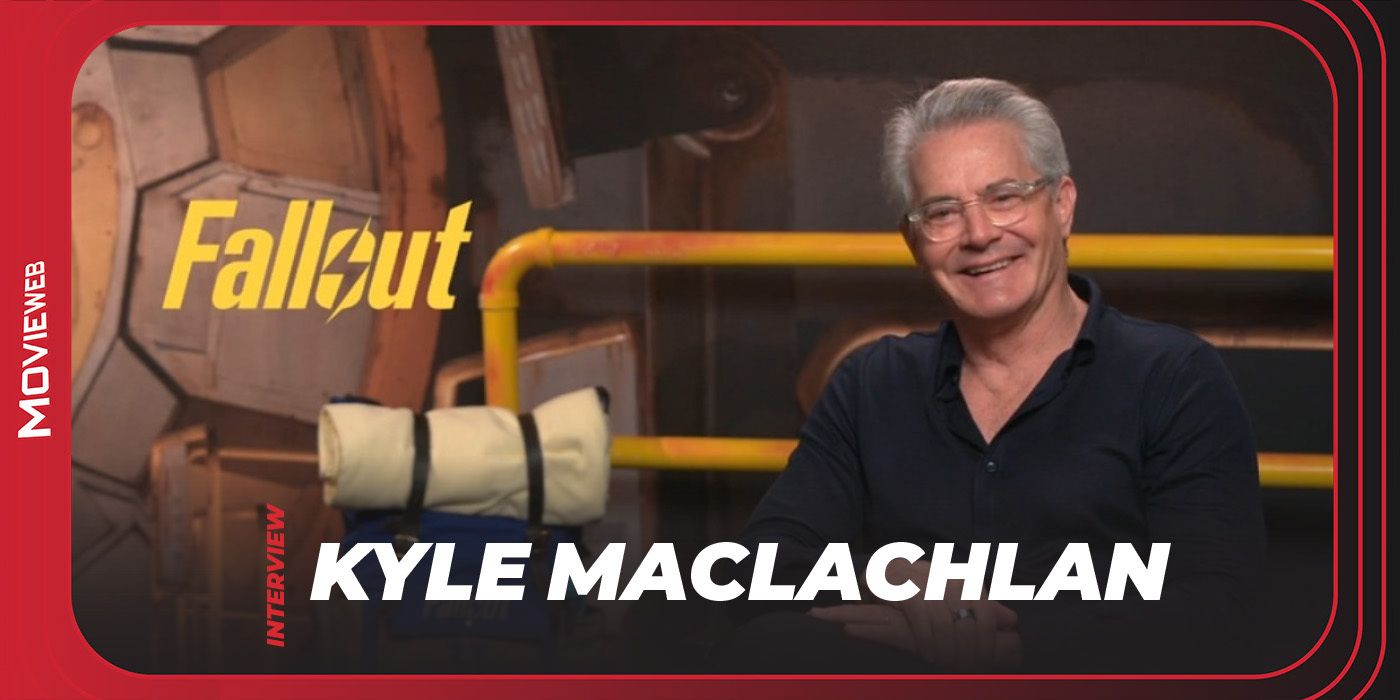Summary
-
Fallout
premiered on Prime Video with nods to the game series, offering Easter eggs and references galore for fans to enjoy. - The series pays close attention to the timeline of the
Fallout
games, setting up a rich and immersive narrative experience for viewers. - Characters in
Fallout
embody different gameplay elements familiar to fans, making the series feel true to the spirit of the game franchise.
Fallout premiered on Prime Video and received extremely positive reviews from fans and critics alike. Based on the video game series of the same name, Fallout does not adopt one specific game and instead takes place within the world of the games. This means the events of the series are in canon with the games, but it also crafts its own story. This means that there are plenty of references, Easter eggs, and connections to the wider Fallout franchise that fans will recognize.
There are obvious elements like specific creatures, but Fallout provides plenty of fun callbacks to how a player would explore the world of the Wasteland, audio sounds lifted straight from the game, and explanations of major parts of the franchise canon that have never been explored until now. Here are the biggest Easter Eggs and references in Fallout.
Fallout’s Timeline and Setting
Fallout
- Release Date
- April 10, 2024
- Seasons
- 1
- Studio
- Amazon Studios, Kilter Films, Bethesda Game Studios
The Fallout television series is set in the year 2296, the furthest point in the game’s timeline. The series’ beginning actually starts in 2077, the day the bombs dropped. Fans of the franchise got to see these same events unfold at the beginning of Fallout 4, but in a different part of the country, as that game was set in Boston.
Fallout 76 is the earliest game in the franchise in terms of chronological order, taking place in 2102, just 25 years after the bombs drop, which audiences see in the first episode. The first game, Fallout, takes place in the year 2161, with Fallout 2 set 80 years later in 2241. Fallout 3, arguably the most popular entry in the franchise, takes place in 2277, about 19 years before the start of the series.
Fallout New Vegas takes place in 2281, while Fallout 4 is set in the year 2287, just about nine years before the series starts. Since Fallout is the furthest story in the timeline, major events from the previous games could inform the story. However, because many of the games rest on choices a character makes, the series largely avoids big revelations to avoid making a big canon commitment.
|
Title |
Year It Is Set |
|
When The Bombs Drop |
2077 |
|
Fallout 76 |
2102 |
|
Fallout (1997) |
2161 |
|
Fallout 2 |
2241 |
|
Fallout 3 |
2277 |
|
Fallout: New Vegas |
2281 |
|
Fallout 4 |
2287 |
|
Fallout (2024) |
2296 |
Also worth noting is the setting. Fallout takes place in the wastelands of California, specifically Los Angeles. This places the setting of the game in close proximity to the setting of the original Fallout game, which was set in Southern California. Fallout 2 took place in Northern California. It is also close to the setting of Fallout: New Vegas, which, as the title implies, is set in the Mohave Desert, specifically Las Vegas, Nevada. The characters of Fallout are pretty separated from the settings of Fallout 76, Fallout 3, and Fallout 4, which take place in Appalachia, Washington D.C., and Boston, respectively.
Familiar Sights and Sounds of Fallout
Certain hallmarks of the Fallout games appear in the series, like the Brotherhood of Steel armor and items like stimpacks. Yet, throughout the series, there are numerous visual and audible references to the game series. Food items like Sugar Bombs and Nuke-A-Cola are seen on the television screen in the episode’s opening prologue, and at one point, someone offers Lucy an iguana on a stick, one of the food items in the game that gives a player health. Grognak, a comic series in the franchise, is seen as a cartoon in the prologue. Familiar stops like Red Rocket gas stations from Fallout 4 or Super Duper Mart, which first appeared in Fallout 3, also appear in the way of truly immersing the audience in the world of the games.

Fallout Fans Need to Watch This Post-Apocalyptic Epic
The Book of Eli, the post-apocalyptic action film, is a must-watch before Prime Video’s Fallout series releases in 2024.
There are also key sound effects, from the sound of a stimpack being used for health to the sound of water being opened, which is the same sound it makes when you select drinking water in the game. The Pip-Boy also gives the same radiation counter noise when Lacy is detecting the levels of radiation in the wasteland, particularly after she gets radiation poisoning from consuming dirty water.
The visuals of Pip-Boy itself are very true to the game. It shows a readout of the body and its health, similar to how a player tracks their own health in the game. It also features a map that people can place coordinates into, similar to how a new location is added to one’s map when given a main or side quest in the games. Even at the beginning of the show, when Ella Purnell’s Lacy MacLean is reading off a letter to a council to be selected for a marriage program with someone from Vault 32, a lot of the facts about herself are similar to stats and skills a player chooses when they start the game.
Fallout’s Characters Are Designed Based on Different Gameplay
One of the struggles with adapting a video game is taking what is interactive-based media and making it passive. Fallout is particularly tricky as the creators are not adapting a very specific story like The Last Of Us or bringing an iconic character to life like The Super Mario Bros. Movie, but instead crafting a story in the world of Fallout. Much of the game’s enjoyment came from the different approaches the player could take in the game.
The Fallout series does not adapt specific characters but instead uses the three characters to encompass different elements of the franchise’s gameplay.
- Lucy MacLean (Ella Purnell) is a character who often tries to talk down situations in a manner similar to a character with a high charisma stat. She also starts the story with a tranquilizer gun, a reference to how players can choose to play Fallout with non-lethal methods (but most rarely do). With her also being a resident of a Vault, she fits the most iconic starting place for players in the game as it provides a good explanation of the game for players to experience the threats and dangers of the wasteland for the first time.
- Maximus (Aaron Moten) represents the Brotherhood of Steel faction, one of the most iconic elements that many fans remember as the cover for Fallout 3 and Fallout 4. Maximus is an experienced player wielding massive power armor, one of the most coveted items by first-time players of the game. Maximus seems to lack any charisma and often fails to talk any situation down, needing to fight his way out of it, which he is very good at.
- The Ghoul (Walton Goggins) represents the bounty hunter archetype. The Fallout games are filled with side missions (one the Ghoul even calls out in the show) where a character can take on a job to collect bottle caps for accomplishing specific missions. He is a violent, bloody gunslinger, which is how many conflicts in the games play out. He also often intermediates others, which is a factor in the game for de-escalation.
These three different characters represent how different players often explore the world of Fallout in the game, making for an experience that feels true to the spirit of what fans love about the series.
A Familiar Fallout Setup (With a Twist)
Lucy MacLean begins as a resident of Vault 33, but the events of the story lead her to go out into the Wasteland to find her father. This is a riff on the setup for Fallout 3, where the playable character of the game (The Lone Wanderer) leaves the Vault’s safety to look for his father after he goes missing. Similar to The Lone Wanderer from Fallout 3, Lucy also discovers that she did not always live in the Vault and, at one point, lived in the outside world in a childhood they do not remember.
Lucy’s quest to find her father, only for it to turn sour, is also a twist on the big hook of Fallout 4. That game sees the playable character (Nate/Nora, depending on the gender the player chooses) emerging from a cryogenic pod after 200 years as they look for their son Shaun. Yet they discover Shuan was taken out much earlier, and when they find them, he is now not only an adult but also working for the institute, as well as the primary antagonist of the game. This is similar to Fallout, where Lucy discovers her father was a former Vault-Tec employee, not the paragon of virtue she was led to believe, but also responsible for dropping the bomb on Shady Sands.
Early in the series, someone calls Lucy a “Vault Dweller,” the designation typically assigned to the playable character in the first game. The first Fallout game is referenced when the residents of Vault 33 learn that their water purification chip has been destroyed, which was the main mission that started the first game. While Fallout does not adapt any specific game, it draws on various elements from the franchise to make its own unique narrative that still feels like the game.
Fallout’s Vault Life and Secrets
One of the iconic elements of the Fallout franchise is the Vaults. In four of the games, players start in a Vault. The first Fallout game is Vault 13, with Fallout 3 in Vault 101, Fallout 4 in Vault 111, and Fallout 76 aptly in Vault 76. The main character of the Prime series Fallout hails from Vault 33, which is closely connected to Vault 32 and 31. The show also features Lacy and Maximus stumbling across Vault 4, which has its own culture and customs. This is similar to the games where players can stumble across different Vaults across the Wasteland, each with their own secret.
While Vaults were served to the general public as safety measures as shelters to save a portion of the American population from nuclear war, they were also secretly grand social experiments to gather specific data. Many of these are referenced in the final episode when the Vault-Tec executive meets with the heads of other companies. When Vault-Tec pitches that they can run their vaults however they want, they begin listing off ideas, all of which are from the games and supplementary material. These include
- Vault 27 was deliberately overcrowded. (Fallout Bible)
- Vault 29 was inhabited only by children, with the parents separated and sent elsewhere. (Fallout 76)
- Vault 51 had an AI overseer, which eventually resulted in the AI encouraging the inhabitants to kill one another. (Fallout 76)
- Vault 87 was used to create Super Mutants. (Fallout 3)
- Vault 106 had psychotropic drugs pumped into its air supply. (Fallout 3)
5:13

Fallout Director Jonathan Nolan and Co-Creator Graham Wagner on Their Big Gamble and Finding Great Stories in Video Games
The creative duo dives into the thrill of creating their live-action series, and how The Ghoul was written specifically with Walton Goggins in mind.
The biggest connection between the games and the series is Fallout 4‘s Vault 111, which cryogenically froze its test subjects just like how Vault 31 freezes high-level Vault-Tec employees for future use. The implication could be that Vault 111 was a testing facility to see if the cryogenics for Vault 31 would work long-term since Vault 31 was used for high-up individuals while the subjects of Vault 111 were citizens of a neighborhood called Sanctuary Hills.
The Origins of the Fallout Guy, Explained
One of Fallout’s biggest reveals is the origins of the iconic Vault Guy logo, which is seen all over Fallout through the Vault and is basically the mascot of the entire franchise. Not only do fans discover the origins of the logo, but they also find out that he is one of the main characters of the series, Walton Goggin’s Cooper Howard, aka The Ghoul.
Cooper Howard was a famous Hollywood actor who eventually became the spokesperson for Vault-Tec, helping sell their products, including the various Vaults in the franchise. In his first photo shoot for Vault-Tec, when he is wearing the blue jumpsuit, he takes a series of photos, and in one, he decides to do a thumbs up, which eventually becomes the signature of the franchise. In this one moment, the creation of an icon, both within the world of the story and also the fans who played Fallout, is born.
Howard eventually mutates into a ghoul, becoming a bounty hunter across the wasteland. He is riddled with guilt for how he lent his face to the company that would kick off the war by launching nuclear warheads, triggering the nuclear fallout. The very Vault Cooper Howard sold gave Vault-Tec the power, influence, and incentive to end the world so their product would still be useful. While Cooper Howard did not cause the end of the world, his face is now forever associated with it.
Codsworth’s Origin Is Revealed as Well
One of the most iconic elements of Fallout is the robotic Mr. Handy companions. They are floating spheres with arm-like and eye-like appendages coming out of their body and are often custom-named by whoever owns them. A few Mr. Handy robots show up in the series, including one named Snip Snip, who tries to harvest Lucy’s organs. One common element of them is their voice, one that is proper but also slightly threatening in the right circumstance. Like with the Vault Boy, Fallout gives an origin to this beloved piece of lore.
Matt Berry, famous of What We Do in the Shadows, appears first as the voice of Snip Snip before appearing in the flesh two episodes later as actor Sebastian Leslie during a flashback to Cooper Howard’s life before the war. Leslie reveals he sold his vocal rights to the company that creates Mr. Handy robots but only got paid $186 alongside a Mr. Handy model himself. He also drops the name Codsworth, a reference to the Mr. Handy model in Fallout 4, which can act as the player’s companion. This means the voice of Mr. Handy and the face of Vault Guy used to be friends back in Hollywood.
The New California Republic, Shady Sands, and New Vegas
Shady Sands was introduced back in the first Fallout game and was the first settlement the player visited. The town eventually grew into the settlement and home of the New California Republic, as shown in the television show. The New California Republic was a major faction in both Fallout 2 and Fallout: New Vegas, fighting for control and rule over the Wasteland. By the time of the series, though, they are in shambles and appear to be on their final days.
The show reveals that in the year 2277 (the same year that Fallout 3 takes place), Shady Sands was destroyed when a bomb was dropped on it, later revealed to be done by Hank MacLean. It is a big deal for Fallout to destroy a major setting in one of the games, but even more in that it now creates a continuity error with Fallout: New Vegas. Fallout New Vegas makes reference to Shady Sands as being functional, but that game takes place in 2281, four years after it was reportedly destroyed in Fallout. This now creates a continuity issue. There are a number of ways the creators can explain this retcon if they want, and it appears that they will.
The final image of Fallout setting up season two shows Hank MacLean looking out at New Vegas, implying that will be the setting. This opens the door for many characters and events from that game to be referenced in Season 2 while also explaining the continuity issue. This was not the only New Vegas Easter egg.
5:36

Kyle MacLachlan on Fallout’s Offbeat Vibe, David Lynch’s Magic, and Whether Dune 3 Is in His Future
The Twin Peaks icon also unpacks being cast in darker tales and how the personal stories in Fallout drive the series.
In the final episode, the head of RobCo Industries is seen meeting with various other corporations regarding the use of the bomb. By his slick back hair, mustache, and reference to casinos, fans will certainly recognize this as the human form of Mr. House, one of the major characters in Fallout: New Vegas, who runs the strip as a robotic face on a screen. His cameo at the end of the season, plus the hint of New Vegas, suggests he might make a big play in the future of the series if the canon ending features him still alive.
Fallout Season 2 seems like a strong possibility, and with New Vegas as a potential backdrop, there will likely be even more Easter eggs and references to the wider universe. We could even set up Fallout 5, which is in development. Fallout is streaming now on Prime Video.



